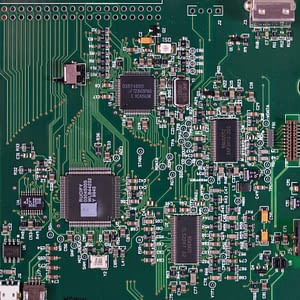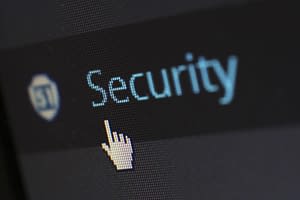So much has been written about cybersecurity that it’s sometimes easy to forget exactly why it’s important in the first place.
Cybersecurity is important for two very human reasons:
- Our identities are increasingly online. From credit agencies to our workplaces and to the social media networks that we use every day, we are living online.
- The supply chains that keep us fed and clothed are all managed through information technology.
Last year, Risk Based Security reported that in the first six months of 2019, 4.1 billion records were exposed via data breaches. The impact of major data breaches involving organizations such as Equifax, Amazon, Marriott and Microsoft means something more than just having to change your password.
It means that individuals and groups are targeting the technology that, basically, defines and supports you in the modern world. They are targeting systems that contain your personal data. In other words, attackers worldwide are targeting you. That said, we must protect information systems.
Power, Presence and Privacy: Three Essential Factors
Information security is all about three factors: power, presence and privacy. Today’s tech is incredibly powerful. Just last year, the typical mobile device became more powerful than a traditional PC.
Additionally, tech is everywhere. We’re now wearing technology that has the ability to gather sensitive data wherever we go. Cybercriminals love to obtain this information. As a result, organizations that collect this data are held to strict standards.
Information: What’s at Stake
We love our Internet of Things (IoT) devices. But they gather sensitive information. Some of this information is called primary information, because it’s directly about you and your identity.
Examples of primary information include:
- Username
- Passwords
- Bank account information
- Credit card information
- Social security numbers
- Your weight
- Your purchasing choices
- And so much more
Combined, this is a recipe for identity theft.
This type of data is often referred to as primary data, or even personally identifiable information (PII). This data is captured, stored and processed. This processing is often called data analytics or business intelligence (BI).
Devices also capture indirect information about you, often called metadata. This data is the seemingly insignificant information you and your devices generate as you move from place to place.
Contact-tracing applications – which gained popularity amidst the COVID-19 outbreak – as well as typical mobile devices are all capable of capturing this metadata. Metadata can include the 4G cell phone towers and 5G devices that your mobile phone or smart watch has connected to, the ISP you are currently using and your location.
Each time you connect to a Wi-Fi hotspot, an organization is collecting data. The primary and secondary data you generate can all be crunched. This crunching allows organizations to make highly accurate guesses about your interests, future activities and even intentions. It’s up to cybersecurity professionals to ensure that this personal information remains private, secure and properly used.
Types of Cybersecurity Threats
When it comes to cybercrime, many specific threats exist. The following table describes some of the more common cyberattacks that occur worldwide.
Threat |
Description |
|---|---|
| Social Engineering | This is the primary way attackers get in. This type of cyberattack is often conducted in conjunction with other attacks. Specific social engineering methods include phishing, which is where an attacker tricks a user into taking an action (e.g., clicking on a link) that defeats security. Learn more about social engineering. |
| Ransomware Attacks | This particular cyberthreat is where an attacker encrypts the victim’s sensitive data, taking it hostage. The victim must then pay to obtain a decryption key to regain access to their computers. In some cases, ransomware can actually reveal sensitive information to the public, which can cause the victim organization to receive fines from government agencies. Learn more about ransomware. |
| Distributed Denial of Service (DDoS) Attacks | This attack involves the misuse of native TCP/IP-based protocols to consume bandwidth and overwhelm systems so that they can’t provide essential services. Learn more about DDoS attacks. |
| Malware | Hackers create applications of all types. These include spyware tools that log your every key stroke, as well as illicit servers that steal sensitive computer systems data. Learn more about malware. |
Why Cyberattacks Happen
Small and large businesses alike have the tendency to skip essential steps when deploying technology. As a result, companies sometimes create the conditions for cybersecurity attacks to occur without realizing it.
Sometimes, an organization consciously decides to skip essential steps of the software development process. Code reviews, while essential, are time-consuming, and are often seen as less important than releasing a new feature or service on time. Companies should perform regular risk assessment activities and also update their antivirus software and other security tools. However, organizations don’t always do this.
Whenever an organization skips a step, it is said to incur something called technical debt. This debt is much like what happens whenever you use credit cards – you have to pay this debt back quickly, or you run the risk of building up debt and having a bad credit history. In the case of organizations that incur technical debt, not paying it back often results in cybersecurity issues.
Who Is Threatened?
The importance of cybersecurity is universal; it isn’t just a technical issue. It involves all of us.
Whenever an organization skips essential steps or looks the other way, cyberthreats and security breaches impact individuals, companies and even countries.
Threats to Individuals
Increasingly, attackers are able to manipulate large groups of people by feeding them misinformation and luring them to websites and other resources that can steal their information. As the COVID-19 pandemic spread around the world in early 2020, attackers exploited the opportunity, using social engineering involving appeals to help with the pandemic.
Threats to Companies
Well-funded attack groups now profile and target both large and small businesses. The MITRE corporation is a U.S.-based non-profit organization that, among many other activities, tracks state-sponsored hacking groups from around the world.
Many of these groups conduct sophisticated Advanced Persistent Threat (APT) attacks, which are designed to gain long-term, illegal access into networks. One of these groups, called APT41, is responsible for well-coordinated attacks on governments, as well as companies in the health care, telecommunications and technology sectors around the world.
Threats to Countries
Nation states are a third major target. Attacks on national, state and local governments continue to occur, many with the goal to destabilize fundamental pillars of a particular country. Those pillars can include news and social media, utilities (e.g., water and electricity), election infrastructure and the finance and tech sectors.
- In 2012, two separate attacks targeted the U.S. Office of Personnel Management for a period between 2013 and 2105, eventually stealing the personally identifiable information of just over 22 million people.
- In 2017, threat actors from Russia planted a version of wiper malware, eventually called NotPetya, on the servers of a Ukrainian tax preparation software website. Eventually, NotPetya spread around the world, destroying data worldwide.
- In 2020, the U.S. Department of Health and Human Services (HSS) and many hospitals experienced Distributed Denial of Service (DDOS).
Increasingly, attackers are able to use artificial intelligence (AI) to gather information and target the most valuable opportunities, as well as the least-protected victims.
How Cybersecurity Professionals Allow us to Move Forward with Confidence
Cybersecurity professionals are the people charged with implementing security systems of all types. They work with real-time data to secure information systems and personal identities. They make sure that cloud services (e.g., AWS, Azure, Google Cloud) are properly managed, especially when they contain sensitive customer data. They implement various types of security systems, including network monitoring systems, surveillance cameras, antivirus software and other tools. IT security workers help manage cybersecurity risk by pointing out errors, skipped steps and ways that attackers operate.
Today’s cybersecurity workers cooperate with their peers worldwide to share information about security incidents. They also work with AI-enabled software services to help improve cybersecurity measures.
The Effects of the COVID-19 Pandemic on Cybersecurity
Starting in March 2020, the COVID-19 pandemic brought on a wave of cybersecurity attacks. As mentioned above, the majority of these scams involved social engineering, taking advantage of individuals who fell victim to more sophisticated pretexts.
Social engineering is not the only type of attack that increased during the pandemic. With many people working at home for the first time, often using family-purchased and maintained computers rather than those issued and controlled by IT and security departments, threat actors found new opportunities for malware, ransomware and ATP attacks. Business email compromise (BEC) attacks, according to some researchers, increased 200% during the pandemic.
Governments and businesses worldwide also moved quickly to the cloud to accommodate the mostly remote workforce. In many cases, this process has gone well. But some migrations and deployments occurred very quickly, creating opportunity for attackers. Make sure your business builds a strong, thorough cybersecurity deployment with us to protect your data from being stolen.














